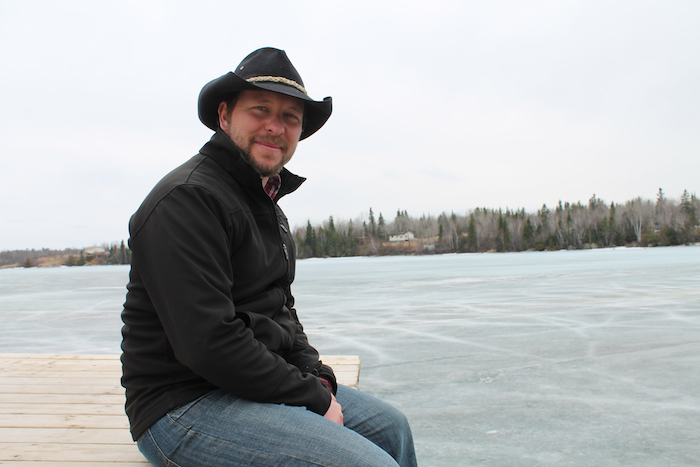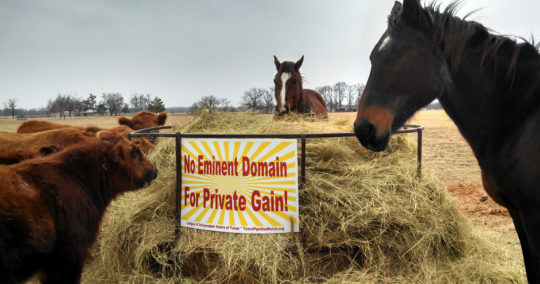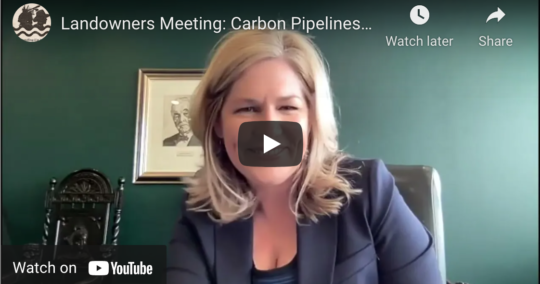The following is an excerpt from a longer piece previously published by the Canadian National Farmers Union on their website. A link to the full post can be found here: http://www.nfu.ca/energy-east


Working with the Council of Canadians, I spent a week visiting communities in Manitoba and Saskatchewan along the Energy East pipeline path in the spring of 2015. Last fall I joined a similar public speakers tour and series of meetings with New Brunswick communities on the other end of the proposed pipeline.
The conversations I’ve had with landowners, First Nation members, and concerned residents very much remind me of the conversations we had when we were first reckoning with the risks posed by Keystone XL. We hear pipeline proponents peddle the same myths. Like the promises of jobs. But these jobs will be mostly short-term. In fact, they are over-advertised to lure people to support the project. And they preempt real discussion about how to build a long-term sustainable energy future that keeps young people in smaller communities and helps the economy grow.
I’m confident that as time marches forward, independent reports like those we have seen on the Keystone XL job promises will also find Energy East job promises overblown. I understand this has already begun in Ontario and Quebec.
We too have heard that Keystone XL would reduce dangerous oil-by-rail traffic. Driving in Saskatchewan I saw for myself the many tank cars carrying oil along the rails going right through towns. I stood in the Regina community of Harbour Landing where the Keystone pipeline crosses alongside multiple other, old natural gas pipelines owned by TransCanada (one of which they want to convert to oil for Energy East).
Companies are not showing responsibility to communities by being forthright about the chemicals that are passing through waterways either by rail or by pipe. Industry is after as much capacity, pipeline or rail, as they can get to feed the booms happening in the tar sands and U.S. fracked oil. Approval of either Keystone XL or Energy East pipelines will add to the risks of communities facing oil-by-rail traffic.
There are viable alternatives. In fact, Nebraskans built a New Energy Barn in the Keystone XL path. It features solar panels that generate clean energy into Nebraska’s public power grid.
There is also the reality that Energy East, just like Keystone XL, is an export pipeline. In order for foreign corporations to profit, we are all being asked to bear the risks of a pipeline spill. At 1.1 million barrels per day, Energy East would carry around 300,000 more barrels than Keystone XL. When it spills, it threatens to be on a massive scale.
In Nebraska, we are very much concerned about a spill seeping into the Ogallala aquifer. In Winnipeg, I learned that the old pipeline is a mere 2 metres below the sole aqueduct providing the drinking water for the entire city. It also crosses a river that feeds into the Assiniboine, which then flows through Winnipeg to the beautiful and historic The Forks I had the pleasure of visiting. Having met with local residents I learned that St. Norbert in Winnipeg already experienced a TransCanada pipeline rupture in the 1990s that destroyed one home. The pipeline that ruptured is next to the pipeline set for conversion for Energy East.
In addition to threatening a Regina subburb with a serious spill, the pipeline path travels near Buffalo Pound Lake and crosses the South Saskatchewan River (which are critical drinking water sources for several communities) and passes through agricultural land dependent on their wells and watersheds. The pipeline path also goes directly through Saskatchewan’s Great Sand Hills. As a native of the Nebraska Sandhills, this is a familiar landscape to me. The risks to soil and groundwater are great due to the high sensitivity of sand to disturbance and the great potential for the infiltration of chemicals during a spill. Just as in Nebraska, there has been no significant study done on the impacts of tar sands chemicals on groundwater, nor a thorough assessment of how diluted bitumen behaves differently than conventional crude oil when spilled into water.
I learned that in the Prairies landowners are being given the impression that things are already said and done. That the original easements signed, in some cases 40 years ago, apply to this new use. That’s outrageous. If I were rancher here, I’d be demanding a copy of the original easement, combing through it carefully and finding out what strategies I have for challenging this. It is unreasonable to think a 40 year old contract for a natural gas pipeline applies to a converted pipeline carrying oil including diluted bitumen.
We know from the experience with the Kalamazoo River Michigan spill that diluted bitumen can sink when spilled in water, sticking to everything it touches. Over 4 years and a billion dollars spent, submerged bitumen remains.
I get the sense that farmers and ranchers in the Prairies are feeling powerless and isolated, just like we did, at first. This can be overcome. Because of the efforts of many opposed to the project, TransCanada was forced to change their proposed pipeline route in Nebraska. It still poses an unacceptable threat to the Sandhills and the Ogallala aquifer, so we will continue to fight it.
As well, we have a case before the Nebraska Supreme Court pitting three Nebraska landowners protecting their land against an irresponsible Nebraskan law attempting to fast-track the pipeline route approval process. The law has already been ruled unconstitutional by a lower district court. So currently, TransCanada has no legal route through Nebraska.
We’ve joined farmers, ranchers, and tribal communities from along the pipeline route to form the Cowboy Indian Alliance. This past September, we rode our horses into Washington, D.C., and set up camp near the White House to tell President Obama to reject the pipeline. We’ve stood beside people of all stripes in the 400,000-strong People’s Climate March in New York denouncing the pipeline’s unacceptable climate pollution.
Keystone XL was originally portrayed as a project in all of our interests, a straightforward decision. We have now seen years of delays that have doubled TransCanada’s costs and mobilized millions of Americans in defense of our land, our water and a better, brighter future without fossil fuels.
The Canadian Prairies tour introduced me to many talented and resolute people who are working together to protect their land, water and property rights. From farmers to First Nations elders, from the city of Winnipeg to the wind-swept Sandhills of Saskatchewan, it is clear that people will come together and fight to keep their drinking water and their homes from being endangered and exploited by an export pipeline that benefits a few wealthy corporations at the expense of many Canadians.



